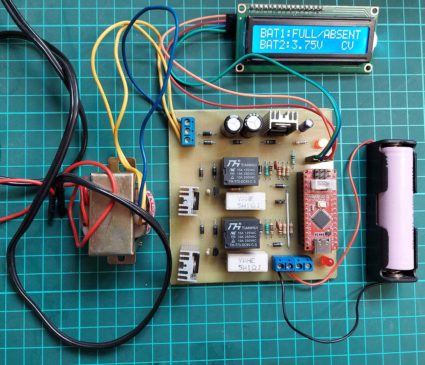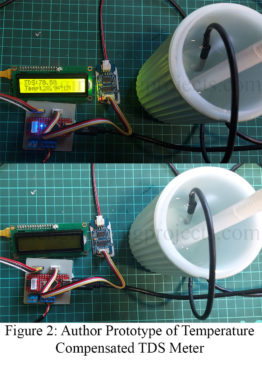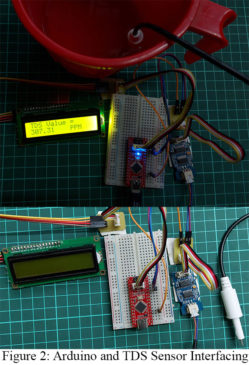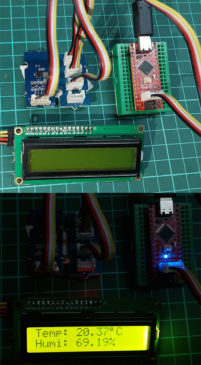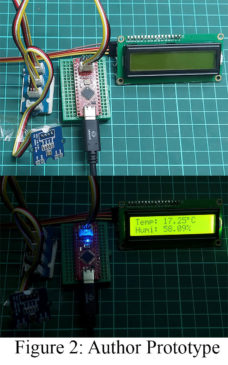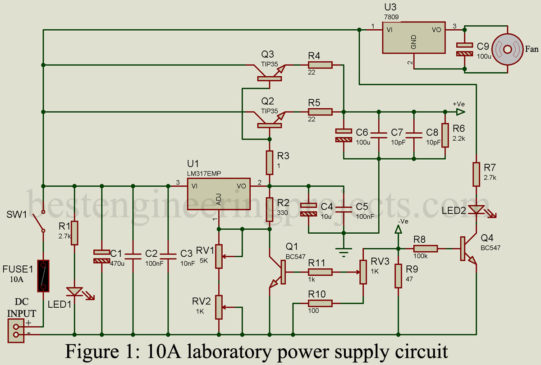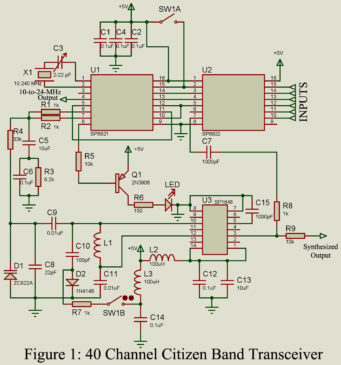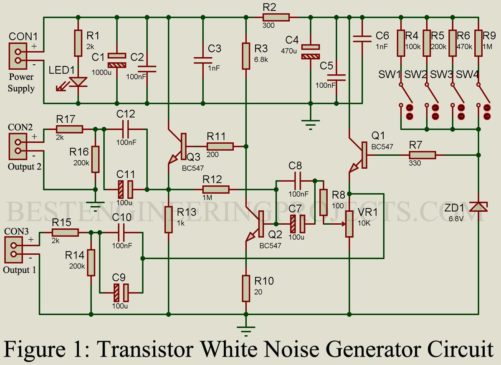In this article, you will learn to design DIY Solar 18650 Charger as well as a solar emergency light. This device will help you charge a device through a USB port and it has an inbuilt led in it, which will serve as an emergency light when needed. Introduction of DIY Solar 18650 Charger with Emergency Light: Solar energy is the best way to reduce your energy consumption as it uses sunlight to produce energy. Sunlight can be utilized neatly, without harming our environment. So, here we are also going…
Read MoreCategory: Electronics Projects
Arduino LiFePO4 Battery Charger Circuit
Amongst the rechargeable batteries available on the market, Lithium Iron Phosphate battery (LiFePO4 battery) or LFP battery (Lithium Ferro Phosphate) is widely used due to the various benefits offered, compared to other batteries. Longer life span, highly safe, lightweight, improved discharge, and charge efficiency are some of the advantages provided by the LiFePO4 batteries. In the market, you will find different types of LiFePO4 battery chargers that may or may not fulfill your requirements, and you may find them expensive. Previously, we had already discussed a DIY LiFePO4 battery charger…
Read MoreTemperature Compensated Arduino TDS Meter
In this article, you will learn about the effect of temperature on the TDS of water and finally, you will learn how to make a “Temperature Compensated Arduino TDS Meter”. TDS (Total Dissolved Solids) is the sum of organic and inorganic substances dissolved in water and, the methods used for the measurement of TDS value are Gravimetric Analysis and the Measurement of Electric Conductivity (EC). The gravimetric analysis provides reliable TDS value but it is time-consuming and is not very applicable when analyzing a lot of samples. So the measurement…
Read MoreTDS Sensor and Arduino Interfacing
In this article, you will learn about TDS Sensor and Arduino Interfacing. TDS stands for Total Dissolved Solids and represents the amount of total dissolved solids (organic and inorganic substances) in water. TDS value is related to water quality. Typically, the higher the TDS value, the poorer the water quality. Pure water has a TDS value of 0, and the TDS value increases for increasing dissolved solids. But do remember that measuring the TDS value doesn’t provide you with the information on whether the dissolved solids are healthy for the…
Read MoreInterfacing Temperature and Humidity Sensor TH02 with Arduino
TH02 is a consumer-grade digital temperature and humidity sensor. Although it can operate with a humidity range of 0-100% RH, it provides reliable or highly accurate data when the environmental conditions are between 0-70°C and 0-80% RH. The reason to use the TH02 sensor is that it provides a reliable reading in most home and daily applications if operated at its measuring range. It comes with its output calibrated in standard I2C format. In this article “Interfacing Temperature and Humidity Sensor TH02 with Arduino”, you will learn how to interface…
Read MoreInterfacing AHT20 with Arduino
AHT20 is a temperature and humidity sensor that utilizes a MEMS semiconductor capacitive humidity sensor and a standard on-chip temperature sensor. It has better performance and is more stable in harsh environments compared to DHT11, DHT22 which are commonly used temperature and humidity sensors. It has an astounding humidity measuring range of 0-100% RH with humidity accuracy as low as ±2% at 25℃. It comes in an SMD package and its output is calibrated in standard I2C format. In the article “Interfacing AHT20 with Arduino”, you will learn how to…
Read More10A Laboratory Power Supply Circuit
A good high-power laboratory power supply must-have device for electronic enthusiasm. As being electronic enthusiastic we all love to design our own bench power supply. So here in this article, you will learn to design your own variable current and voltage 10A laboratory power supply circuit. Features of 10A Laboratory Power Supply Circuit: Users can select voltage and current as per the requirement Constant current mode Short circuit indication and protection Voltmeter and ammeter Fuse for extra protection Applications It can be used as a general variable power supply. It…
Read MoreMicrophone Preamplifier and Noise Limiter
The circuit posted here is of a microphone preamplifier and noise limiter. The main role of a microphone preamplifier circuit is to raise the signal level of the microphone output signal. A microphone is a transducer that converts sound signals to electrical signals. The output signal of the microphone is very small in a range of a few millivolts. This signal needs some level of amplification before the power amplification. Generally, the gain of the preamplifier is set to between 30 to 100. Besides pre-amplification, the circuit also limits noise.…
Read More40 Channel Citizen Band Transceiver
The availability of low-cost PLL and programmable divider ICs has led to the use of synthesizers in virtually all channelized transceivers. This is true even for the very low-cost systems used on the 40-channel citizen band transceiver. The circuit of the 40 Channel Citizen Band Transceiver is shown in Fig. 1 allows all necessary frequencies for a CB transceiver to be generated by using a single-crystal oscillator. The 40 channels are spaced at 10-kHz intervals (with some gaps) between 26.965 and 27.405 MHz. Local oscillator frequencies for the reception of…
Read MoreSimple White Noise Generator Circuit
A signal which contains almost all frequencies is called white noise. In an audio system white noise contains only audible frequency. The white noise of the electrical system is analogous to white light from optics, where white light contains all frequencies or colors. White noise is mostly used in the testing audio equipment like pre-amplifier, power amplifiers, filters, etc. Check out the article on Electrical noise | Types of Electrical Noise. So, today in this article we are going to describe a simple white noise generator circuit. This circuit can…
Read More
